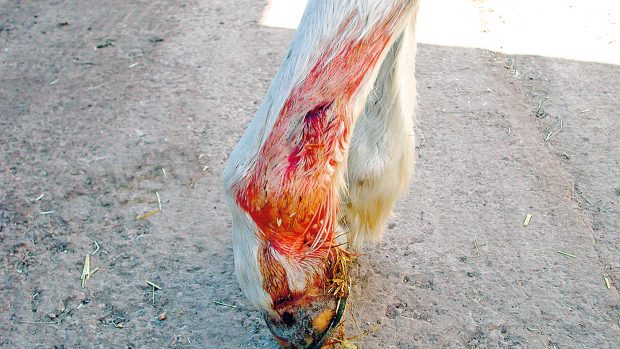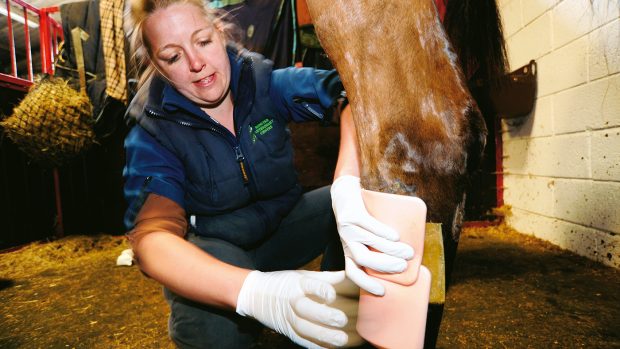While our horses receive the best possible attention for the slightest injury, with the most scrupulous care taken to avoid infection, when it comes to ourselves, very often the “it’s only a scratch” policy is adopted.
Although many wounds are superficial, if they are not adequately treated infection could take hold, leading to more serious problems and most seriously a prolonged recovery period during which you may be unable to ride or care for your horse.
When caring for horses just about any injury is possible, and the type of wound you receive will depend upon how and what inflicted it.
Lacerations and tears: don’t tend to bleed excessively, but may have tissue damage and contamination from germs, so infection is a high risk.
Incised cuts: are usually cleaner, may bleed profusely and possibly need stitching to repair damage to tendons and nerves.
Contusions (bruises): ruptured blood capillaries beneath the skin. If severe, may indicate a fracture or internal damage.
Puncture wounds: a classic cause of infection or tetanus — especially if stabbed in the foot with a stable fork, which will carry bacteria deep into the wound.
Abrasions: superficial but can become infected by foreign particles if not cleaned thoroughly.
Treating bleeding
- Bleeding from most superficial injuries can generally be relieved by pressure and elevation
- Clean a dirty wound by rinsing gently under running water, or use an alcohol-free wipe. Pat dry and cover with sterile gauze.
- Help reduce bleeding by elevating the injured part above heart level, if possible
- Wash the surrounding area with soap and water, using clean swabs for every stroke. Always wipe away from the wound to avoid contaminating it
- Pat dry, then cover the wound using a clean, fresh, self-adhesive dressing
Treating bruises
Both bites and kicks from horses result in severe bruising, not to mention most falls.
Apply a cold compress, either by making a pad from a towel soaked in very cold water (you will need to re-soak the towel every few minutes) or by using an “ice bag”, such as a bag of frozen peas wrapped in a dry tea towel. Ice should not be put directly onto the skin.
Keep the compress in place for at least 10min. If the symptoms do not ease or the kick was in the chest or abdomen, seek medical advice.
| This article first appeared in the Horse & Hound magazine. Don’t miss this week’s Accident & Emergency feature (4 September), which focuses on coping with severe bleeding.
Click here to subscribe and enjoy Horse & Hound delivered to your door every week plus 19 issues free! |




